Government Digital Service
description: Unit of the UK government charged with digital government services
10 results

Recoding America: Why Government Is Failing in the Digital Age and How We Can Do Better
by
Jennifer Pahlka
Published 12 Jun 2023
The dignitaries turned out to be Francis Maude, the minister for the Cabinet Office, and Mike Bracken, who was standing up what would soon become the UK’s Government Digital Service. They were both much less intimidating than I had feared. I had no way of knowing then that two years later I would go to the White House and lean heavily on Mike for inspiration and support. All I knew then was that a cabinet minister of the UK was in our grungy conference room, asking all sorts of questions about what we were doing and actually listening to the answers. This seemed highly unusual. A few months later, the GDS published its first piece of doctrine, a set of design principles for government digital services. I clicked on the link with interest, wondering what those lovely British people had been up to.
…
Surely they’d recognize that implementation capacity belongs in the most powerful parts of government, because without it we risk losing the policies we most treasure. I was certain we would be on a glide path. There was a precedent for an office of tech nerds within central government. In 2011, the United Kingdom had established the Government Digital Service (GDS), whose director of digital had extraordinary authority for technology spending and strategy across ministerial departments and reported directly to the minister for the Cabinet Office. The GDS was shaking things up in London, questioning government’s reliance on enormous contracts with a small number of vendors and launching streamlined, easy-to-use services to take the place of clunky, overwrought ones.
…
The advantage of such a setup is that it’s always easier to collaborate when the other party chooses to, and this is often an effective strategy for wider change. GSA was also chartered to make investments that could be leveraged across agencies—building tools and teams for common use was what they did. But a unit at GSA wouldn’t be able to do some of the things that the Government Digital Service did across the pond, especially if agencies weren’t asking for a new approach. Would a GSA unit have the authority and flexibility to help in a crisis? Would it be able to shake things up the way the Brits had done? We’d been furloughed on October 1, the day that healthcare.gov launched and crashed.
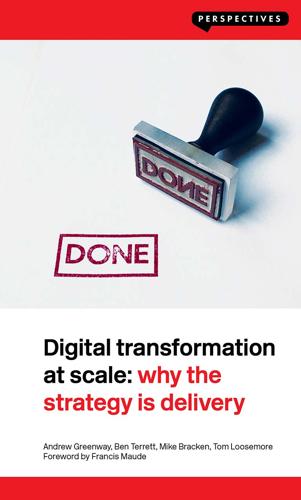
Digital Transformation at Scale: Why the Strategy Is Delivery
by
Andrew Greenway,Ben Terrett,Mike Bracken,Tom Loosemore
Published 18 Jun 2018
We have partnered with organisations in more than 20 countries, and worked in collaboration with several multilateral organisations, including the European Union and the Inter-American Development Bank. Andrew Greenway worked in five government departments, including the Government Digital Service, where he led the team that delivered the UK’s digital service standard. He also led a government review into applications of the Internet of Things, commissioned from Government’s Chief Scientific Advisor by the UK Prime Minister in 2014. He now writes for several UK and international publications on government and institutional reform. Ben Terrett was Director of Design at the Government Digital Service, where he led the multidisciplinary design team for GOV.UK which won the Design of the Year award in 2013.
…
Copyright © 2018 Andrew Greenway, Ben Terrett, Mike Bracken and Tom Loosemore Published by London Publishing Partnership www.londonpublishingpartnership.co.uk Published in association with Enlightenment Economics www.enlightenmenteconomics.com All the images in the colour plates section are courtesy of Ben Terrett or @gdsteam Flickr and are published under a Creative Commons License All Rights Reserved ISBN: 978-1-907994-80-7 (ebk) A catalogue record for this book is available from the British Library This book has been composed in Candara Copy-edited and typeset by T&T Productions Ltd, London www.tandtproductions.com Foreword Francis: if plagiarism is the sincerest form of flattery, you should be feeling very flattered.’ This email dropped into my inbox in early 2015. It was from Malcolm Turnbull, Australia’s prime minister at the time of writing but then the communications minister. It referred to his recent establishment of the Digital Transformation Office, Australia’s equivalent of Britain’s Government Digital Service (GDS), and explicitly modelled on what we had created in the UK. This followed President Obama’s creation of a US Digital Service, copied from the same template. In the lead up to the 2010 general election, I was leading the Conservative Party’s work in opposition on preparation for government.
…
The UK’s first e-Borders scheme, started in 2003 in order to collect and analyse data on everyone travelling to and from the UK, was cancelled after 11 years and an £830 million investment, leaving behind ‘highly manual and inefficient’ systems.1 A government review in September 2010 of the performance of its 14 largest IT suppliers found that none of them were performing to a ‘good’ or better standard.2 Rumours of a ‘Millionaires Club’, admitting contractors who had pocketed seven-figure sums, swirled around the doomed borders programme. In response to this litany of IT troubles, the UK launched the Government Digital Service in 2011. The GDS was a new institution made responsible for the digital transformation of government, designing public services for the internet era. It snipped £4 billion off the government’s technology bill, opened up public sector contracts to thousands of new suppliers, and delivered online services so good that citizens chose to use them over the offline alternatives, without a big marketing campaign.

WTF?: What's the Future and Why It's Up to Us
by
Tim O'Reilly
Published 9 Oct 2017
page=full. 143 in the shoes of those they mean to serve: Jake Solomon, “People, Not Data,” Medium, January 5, 2014, https://medium.com/@lippytak/people-not-data-47434 acb50a8. 143 “the poor struggle with daily”: Ezra Klein, “Sorry Liberals, Obamacare’s Problems Go Much Deeper than the Web Site,” Washington Post, October 25, 2013, https://www.washingtonpost.com/news/wonk/wp/2013/10/25/oba macares-problems-go-much-deeper-than-the-web-site/. 144 “the best startup in Europe we can’t invest in”: Saul Klein, “Government Digital Service: The Best Startup in Europe We Can’t Invest In,” Guardian, November 25, 2013, https://www.theguardian.com/technology/2013/nov/15/govern ment-digital-service-best-startup-europe-invest. 145 GDS Design Principles: “GDS Design Principles,” UK Government Digital Service, retrieved March 31, 2017, http://www.gov.uk/design-principles. 145 “Start with needs”: After Mike Bracken left the GDS, the first principle was rewritten to leave out the revolutionary idea that existing government processes might be getting in the way of user needs.
…
Meanwhile, back in Washington, DC, where our government-as-a-platform story started, the same realizations and transformations have been playing out in the federal government. THE UNITED STATES DIGITAL SERVICE While the Code for America fellows team in San Francisco was first exploring the problems with SNAP, Jen and I took a trip to London to visit the United Kingdom’s Government Digital Service. While we were there, Jen got a call from Todd Park, at the time the CTO of the United States and a special assistant to the president. Todd had started a new program called the Presidential Innovation Fellows, loosely modeled on Code for America. He called to ask Jen to help him run the program, as Deputy CTO for Government Innovation.
…
When the USDS was finally constituted in August 2014, Mikey Dickerson, the former Google Site Reliability Engineer (SRE) who had played a key role in the healthcare.gov rescue, became its first administrator. It’s significant that the first leader of the USDS was an SRE. The unit already had in its DNA a deep commitment to user-centered service design, through its initial inspiration by the UK’s Government Digital Service and the Code for America team working on food stamps in California. But Site Reliability Engineering is at its core the practice of “debugging” the disconnect between software development and operations and building new connective tissue, and that is exactly what the federal government needed.

This Is Service Design Doing: Applying Service Design Thinking in the Real World: A Practitioners' Handbook
by
Marc Stickdorn
,
Markus Edgar Hormess
,
Adam Lawrence
and
Jakob Schneider
Published 12 Jan 2018
Retrieved March 26, 2016, from http://www.theguardian.com. 56 RAND Europe. (2014). “Psychological Wellbeing and Work: Improving Service Provision and Outcomes.” Retrieved March 26, 2016, from https://www.gov.uk. 57 Government Digital Service (n.d.). “Service Manual” at https://www.gov.uk/service-manual. 58 Throughout the project, Snook held workshops with the funding partners (Department of Health, Department for Work and Pensions, and Government Digital Services) to present findings and identify priorities for research and development. Chapter 7. Prototyping Explore, challenge, and evolve your ideas in reality. Expert comments _______________________________ Alexander Osterwalder Carola Verschoor Francesca Terzi Johan Blomkvist Kristina Carlander 7.1 The process of service prototyping 7.1.1 Decide on the purpose Prototyping to explore Prototyping to evaluate Prototyping to communicate and present 7.1.2 Decide on your prototyping questions 7.1.3 Assess what to make or build 7.1.4 Planning prototyping Audience Roles in the team Fidelity Prototyping context Prototyping loops Multitracking Method selection 7.1.5 Running prototyping sessions 7.1.6 Data synthesis and analysis 7.1.7 Visualizing prototyping data 7.2 Prototyping methods Prototyping service processes and experiences: Investigative rehearsal Prototyping service processes and experiences: Subtext Prototyping service processes and experiences: Desktop walkthrough Prototyping physical objects and environments: Cardboard prototyping Prototyping digital artifacts and software: Rehearsing digital services Prototyping digital artifacts and software: Paper prototyping Prototyping digital artifacts and software: Interactive click modeling Prototyping digital artifacts and software: Wireframing Prototyping ecosystems and business value: Service advertisement Prototyping ecosystems and business value: Desktop system mapping (a.k.a.
…
Here’s the final list of what we found most useful to flesh out each of the personas in turn: — Goals — Situations and considerations (can relate to time frames, logistics, or mindset) — Environment and resources (can include people, information sources, and physical environment) — Ties and associations (including people and organizations/brands) — Issues/challenges (what’s stopping them?) — Workarounds/opportunities (possible solutions, problem solving) We also used this session to further develop a set of user needs for each persona based on the guidelines from the Government Digital Service: 55 As a … [who is the user?] I need to … [what does the user want to do?] So that … [why does the user want to do this?] Step 7: Sharing We then distilled the data down even further and wrote it up using a mix of text and images. We shared our refined personas with the wider Met Office teams and stakeholders, and stuck them on the wall in the project room.
…
In 2014, the Department of Health (DoH), Department for Work and Pensions (DWP), and RAND Europe report outlined existing evidence around mental health interventions and made a call to “provide access to online mental health and work assessments and support.” 56 Snook was commissioned in partnership with The Point People to conduct research to explore future opportunities for digital products and services, specifically looking at the potential of digital to scale up access to frontline services that exist to support positive mental well-being, and also at self-management and how processes like cognitive behavioral therapy (CBT) could be scaled. The project was undertaken with sponsorship by the Government Digital Service (GDS) and focused on executing a discovery phase, outlined in the GDS Service Manual. 57 During this phase, our focus was on identifying opportunities and user needs across varying stages of employment that could then be taken forward by design teams to later work up solutions. As a research and design team, we were focused on not producing “solutions” for two reasons: The discovery phase is about the identification of user needs aligned at core stages of employment, such as “As a line manager, I need tools to recognize my employees’ mental well-being so that I can support them before they reach crisis points” and “As someone who is unemployed, I need encouragement and tools that give me belief in my own abilities, because I have low self-esteem.”
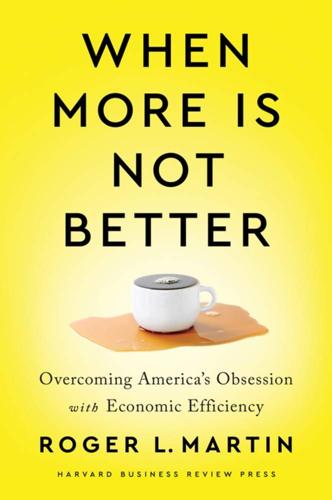
When More Is Not Better: Overcoming America's Obsession With Economic Efficiency
by
Roger L. Martin
Published 28 Sep 2020
But what about a big government initiative affecting thousands, even millions, of people? That’s been successfully done. In 2010, when the UK government was putting together what turned out to be the massively successful GOV.UK website service that went live in 2012, the cabinet office created a unit called government digital services (GDS). The new unit was led by Michael Bracken and Tom Loosemore, whose first task was to convince the various government departments and agencies, which collectively produced hundreds of UK government websites, that the true customer of the websites wasn’t the departments and agencies themselves but rather the citizens that the departments and agencies were set up to serve.10 Even then, the customers that the website producers cared almost exclusively about were those who could make their lives most miserable: reporters and think tanks, who from time to time would criticize what they either saw or failed to see on a government website.
…
See business executives executive tenure, 155 expectations management, 87–88 experimentation, 119 Facebook, 54, 129, 134, 153, 191, 192 Fair Districts, Fair Elections, 204 Fair Districts Florida, 204 fame game, 64–65 Fannie Mae, 80–81, 137 fascism, 15 federal budget, 91 Federal Reserve Board, 31, 80, 103, 137 Fernandez, Brian, 188 Financial Industry Regulatory Authority (FINRA) Rule 2711, 112–113 Financial Industry Regulatory Authority (FINRA) Rule 5310, 64 financial institutions, 137–142 financial regulation, 107–108, 112, 139–141, 143 financial stress, 1–3 firebreaks, 107–109 First Call, 86, 112 fiscal cliff, 78–79, 100 Florange Act (France), 157 Florida, Richard, 67–68 foreign banks, 151 foreign competition, 63 Forrester, Jay, 176–177 forward-looking statements, 87 Founding Fathers, 40, 199 Four Seasons Hotels and Resorts, 122–123 France, 157, 158 Freddie Mac, 80–81, 137 free markets, 40 free trade, 41–42, 56, 63, 66, 150–152 Freidin, Ellen, 204 French’s, 188–189 friction, 101–103, 113, 123–125, 142, 149–152 Friedman, Milton, 24 Fukushima nuclear facility, 100 Fung, Josie, 171 gaming the system, 84–94, 104, 143 Gates, Bill, 129 Gaussian distribution, 33–38, 44, 57, 59, 62–63, 76, 100, 106 GDP per capita growth, 8 General Agreement on Tariffs and Trade (GATT), 41–42, 63, 150 General Electric (GE), 87 Gerry, Elbridge, 201 gerrymandering, 201–205, 207 Gibson, William, 16 Gingrich, Newt, 198, 199 Glass-Steagall Act, 107–108, 109 global financial crisis, 55, 77, 78, 80, 81, 85, 108–110, 137–138 globalization, 65–66 golden mean, 183 Gomez, Selena, 65 Good Jobs Institute, 126 Good Jobs Strategy, The (Ton), 124–125 Google, 54, 134, 153, 154 Google Android, 131 government digital services (GDS), 147–149, 163 government policies, 14–15 See also public policy GOV.UK website, 147–149, 163 Graham, John, 155 Great Depression, 4–7, 12, 15, 31, 41, 76, 159 Groh, Kevin, 188 Grosso, Beth, 165–169, 171, 172, 181 growth. See economic growth growth rate, 8, 11 gun control, 197, 206 Hamilton, Alexander, 40 Harris, Michael, 47 Harvard Business School, 175 Harvard Kennedy School, 180 Harvey, Campbell, 155 Hasso Plattner Institute of Design, 179–180 hedge funds, 91, 155, 157, 158 hedonistic adjustments, 10–11 Heinz, 123–124, 187, 189 high-frequency trading, 90, 156–157 high-income Americans, 7–8 high-speed trading, 90 honeybees, 74–75 Hong Kong, 93–94 hotel industry, 122 House of Representatives, 201, 202 housing bubble, 81, 137, 140 Huizenga, Wayne, 71–72 humanities, 181–182, 184 IBM, 132 IDEO, 179 ideology, 213–214 iHeartMedia, 97–98, 99, 101 IIT Institute of Design, 180 Illinois Institute of Technology, 180 improvement, 103–106, 113, 132 income average, by percentile, 1913–2015, 7 disparities, 66 growth, 33 mean family, 4, 6 median family, 4–5, 11, 38 real, 10, 11 income distribution, 14, 36–37, 38, 63, 70, 161 income taxes, 159–162 incumbents, 202 Industrial Revolution, 41 industry consolidation, 71–73 See also mergers inflation, 24, 31, 103 innovation, 54 input-output relationships, 81–82 input-output tables, 22 Instagram, 61, 65, 71, 129, 191, 192 Institute for Competitiveness & Prosperity, 17 integrative thinking, 174, 176, 178 Intel, 129 interdependencies, 106–113 interest rates, 80, 81 internet, 63–64, 66 internet of things (IoT), 106 Investors Exchange (IEX), 156–157 invisible hand, 39, 41 Irish potato famine, 75 isolation, 199 Italy, 157 I-Think Initiative, 171–172, 181 Japanese auto manufacturers, 43, 151 Jefferson, Thomas, 40 Jenner, Kylie, 65 job design, 31–32 job market, 66–70 Joe’s Stone Crab, 115–120, 121, 132–133 Johnson, Dwayne, 65 Kaplan, Robert, 129 Kardashian, Kim, 65 Ka-shing, Li, 52 Katsuyama, Brad, 156 Kelley, David, 179 Kennedy, John F., 198 killer whales, 82–83 King, Martin Luther, Jr., 192 Kraft, 123–124 Kraft Heinz, 123–124, 127 labor division of, 39–41 rewards for, 67–70 labor costs, 49–50, 63, 122, 124–125, 128 labor market, 67–70 ladder of inference, 167 laws, revision of, 142–145 leading brands, 191–192 leaky bucket metaphor, 27–28 Leamington Ketchup Affair, 187–190 LearningEdge platform, 177 legal system, 105–106 legislation, 93 antitrust, 53–56, 152, 153 revising, 142–145 Lehman Brothers, 84–86, 104, 137 Leontief, Wassily, 21–22, 30, 80 leveraged buyouts (LBOs), 97–99, 101 Lightner, Candace, 193–194 living standards, 9–11, 33 lobbyists, 91, 93 Loblaws, 188 Long Depression, 31 long-term capital, 157, 158–159 Long-Term Stock Exchange (LTSE), 156 Loosemore, Tom, 147–149 Lorenz, Edward, 81 Loungani, Prakash, 82 Love Canal families, 193, 207 Loyalty Effect, The (Reichheld), 27–28 Lucas, Robert, 24 MacArthur, Douglas, 43 machine model, 22, 25, 26, 30–44, 94, 100, 103–104, 123, 210 Madison, James, 40 management models, 49–50 scientific, 42 total quality, 43 manufacturing industries, 41, 126 Martin, Paul, 141 Martin Prosperity Institute, 2, 17 Massachusetts Institute of Technology (MIT), 176–177, 184 master’s in business administration (MBA), 174–175 McKelvey, Bill, 62 mean family income, 4, 6 Measure What Matters (Doerr), 52 median family income, 4–5, 11, 38 median voter, 38 mental proximity, 145–149 mergers, 53–54, 63–64, 123–124, 141 metaphors for education, 29 importance of, 25–26 leaky bucket metaphor, 27–28 machine, 22, 25, 26, 30–44, 94, 100, 103–104, 123, 210 Microsoft, 131 middle class, 9, 14, 36 mobile operating systems, 131 mobility, 9, 37 models building better, 171–172, 179 in business and public policy, 27–30 of citizens, 145 core components of, 29 critical evaluation of, 171 doubling-down on existing, 214 economic.

Blockchain Revolution: How the Technology Behind Bitcoin Is Changing Money, Business, and the World
by
Don Tapscott
and
Alex Tapscott
Published 9 May 2016
In addition to ensuring document veracity, blockchain-enabled registration through peer-to-peer networks would support self-service, where people verify a document through the network, not through a registrar, as well as personalized service—when you generate an official document, it automatically contains your relevant information and access rights to that information, and tracks who accesses and uses it in the document metadata. For example, the U.K. government is investigating the use of the blockchain in maintaining numerous records, especially for ensuring their integrity. Paul Downey, a technical architect with the U.K. Government Digital Service, noted that the perfect register “should be able to prove the data hasn’t been tampered with” and should store a history of the changes that have been made, plus “be open to independent scrutiny.”21 Blockchain-based systems can infuse efficiency and integrity into document registries of all kinds and many other government processes.
…
See also Microfinance blockchain IPOs, 82–84 blockchain transformations of, 8, 18–19, 58–63, 64, 128 frameworks for accounting and corporate governance, 73–79 Golden Eight of, 61–63, 64, 86 identity issues, 61, 64, 78–79 paradoxes of traditional finance, 55–57 players in blockchain ecosystem, 285 prediction markets, 84–85 reputation and credit score, 79–82 retail services, 71–73 smart devices and IoT, 159 from stock exchanges to block exchanges, 63, 65–66 Financial stability, 295 Financial utility, 69–70 Firefox Web, 129 First era of the Internet, 3–4, 12–14, 15, 39, 49, 92, 95, 106, 124, 265, 281–82, 299–300 “Float,” 45 FNY Capital, 83 Food industry, 138–39, 157–58 Ford, Henry, 246 Forde, Brian, 247, 282, 286, 287, 305 Foreign aid, 20–21, 188–92 Formation costs, 179 Fragmenting public discourse, 212–13 Free agent nation, 110 Freedom of Information laws, 208–9 Free press, 243–46 Free speech, 243–46 Freitas, Miguel, 246 Funding, in financial services, 62–63, 64 Fund-raising, 179 Futarchy, 220 Future Crimes (Goodman), 276 Future-proofing, 152, 197 Galaxy Zoo, 12 Gauck, Joachim, 52 Gault, Mike, 199 Gemini, 284, 291 Gems, 94–95 Gender differences, in banking access, 178, 192 Germany, 27, 51–52 GetGems, 245 Gibson, William, 255 GitHub, 89, 138 Global solution networks (GSNs), 283, 300–307 Global standards networks, 304–6 “God Protocol, The” (Szabo), 4–5 Gold, 34, 95, 199, 254, 260 Goldcorp Challenge, 223 Golden Eight, 61–63, 64, 86 Goldman Sachs, 66, 70, 71, 284 Goodman, Marc, 276 Google, 13, 96, 118, 140, 143, 161, 180, 255, 270, 275 Gore, Al, 212 Governance, 24, 283, 288–89, 307 distributed power, 33–35, 273 in financial services, 73–79 new framework for blockchain, 298–307 regulations vs., 296–97 Government Digital Service, U.K., 205 Governments, 9, 13, 23, 197–225 alternative models of politics and justice, 218–21 Big Brother, 244, 274–75 blockchain voting, 215–17 design principles in, 201–3 empowering people to serve selves and others, 207–11 engaging citizens to solve big problems, 221–23 Estonia example, 197–99, 203, 204, 206–7 in financial services industry, 70 high-performance services and operations, 203–7 players in blockchain ecosystem, 286–87 second era of democracy, 211–15 stifling or twisting bitcoin, 263–65 tools of twenty-first-century, 223–25 Grande, Ariana, 228 Greifeld, Bob, 65, 66, 84 Guardtime, 199 Guez, Bruno, 238 Gun rights, 200–201, 276 Gupta, Vinay, 226, 227 Hacking, 39, 40, 41, 118–19, 138, 151–52, 243–44 boundary decisions, 112–14 business model innovation, 142–44 DAEs, 273–74 smart things, 168–69 Hagel, John, 94 Haiti earthquake of 2010, 20–21, 188–89 remittances, 183 Haldane, Andrew, 9 Hamel, Gary, 110 Hanks, Tom, 78 Hanson, Robin, 220 Hashcash, 34 Hash rate, 241, 260 Hash value, 32 Hawking, Stephen, 274 Health care, 151, 158 Heap, Imogen, 21, 226, 227–28, 229, 231–35 Hearn, Mike, 69, 164–65, 271, 282 HedgeStreet, 84 Hedgy, 105 Herstatt risk, 59–60 Hewlett-Packard, 150 Hierarchies, 12, 88, 93–101, 105–6 High latency, 256–57 Hill, Austin, 28 design principles, 38, 40–41, 43, 51 financial services, 63, 65–67, 76 implementation challenges, 262, 272 Holacracy, 48–49, 88 Hollywood Stock Exchange, 84 Home management, 161, 275 Homomorphic encryption, 28 Honduras, 193–95 Honesty, 10, 11 Horizontal search, 97 Humanitarian aid, 20–21, 188–92 Human Rights Watch, 200 Hyperledger Project, 69–70, 285, 305 IBM, 39, 111, 118, 129–30, 150, 153 IBM Connections, 139 IBM Institute for Business Value, 163 Ideagoras, 137, 138 Identity, 3–4, 14–16, 264–65.
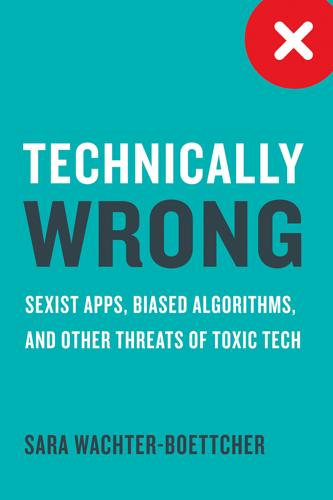
Technically Wrong: Sexist Apps, Biased Algorithms, and Other Threats of Toxic Tech
by
Sara Wachter-Boettcher
Published 9 Oct 2017
Then there are the sites that still prevent users from selecting Ms., which doesn’t imply a particular marital status—even though it’s been more than four decades since Gloria Steinem named her magazine after the term (which, incidentally, dates back to at least 1901).13 Over in the United Kingdom, titles can get even more complicated: a rich history of barons and lords and whatnots has made its way into online databases, creating extra opportunities to confuse or misrepresent users. Thankfully, the Government Digital Service, a department launched a few years back to modernize British government websites and make them more accessible to all residents, has developed a standard guideline that solves all this pesky title business: Just don’t. Their standards state: You shouldn’t ask users for their title. It’s extra work for users and you’re forcing them to potentially reveal their gender and marital status, which they may not want to do. . . .
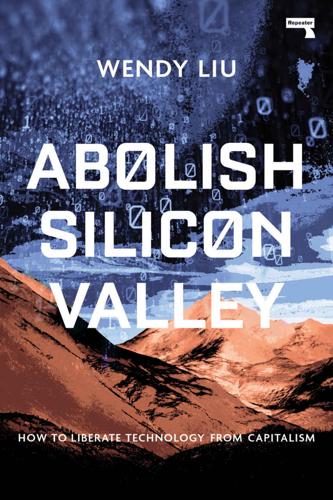
Abolish Silicon Valley: How to Liberate Technology From Capitalism
by
Wendy Liu
Published 22 Mar 2020
Secret development makes sense for small entities working on technology not yet shown to be in the public interest, but once a form of technology is mature enough, there should be a public standard, with democratic oversight and open collaboration rather than secretive competition. Technology should be developed primarily outside the confines of for-profit owned by shareholders; instead, it should be developed within worker co-ops, government agencies like the UK’s Government Digital Service, publicly-funded research labs, non-profits, and grant-supported open source projects. The resulting products should be released under an open license where possible. For products and services where meaningful competition is important, the lever of intellectual property reform offers an alternative to antitrust efforts to break up tech companies, which would have limited success in restoring competition due to intellectual property hoarding and high start-up costs in the sector.
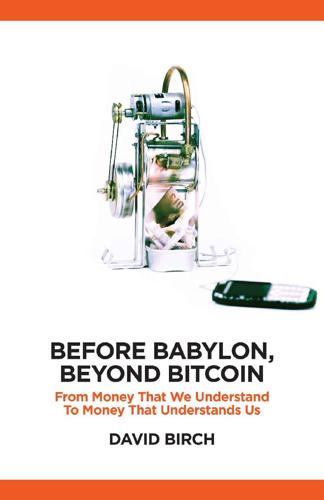
Before Babylon, Beyond Bitcoin: From Money That We Understand to Money That Understands Us (Perspectives)
by
David Birch
Published 14 Jun 2017
’ — Brett King, Founder and CEO of Moven.com, and author of BANK 3.0 ‘Dave Birch’s thoughts on digital identity were seminal to the UK’s Identity Assurance Scheme. Anyone entering the field of digital identity should take this book with them.’ — David Rennie, Identity Assurance Programme, Government Digital Service, Cabinet Office This book argues that identity and money are both changing profoundly. Because of technological change the two trends are converging so that all that we need for transacting will be our identities captured in the unique record of our online social contacts. Social networks and mobile phones are the key technologies.

Exponential Organizations: Why New Organizations Are Ten Times Better, Faster, and Cheaper Than Yours (And What to Do About It)
by
Salim Ismail
and
Yuri van Geest
Published 17 Oct 2014
Now, the system approves a new location instantly and offers alternatives if there’s a problem. That’s an almost millionfold improvement in elapsed time, and all with minimal effort. Successful implementation of ExO strategies within a governmental organization can also be found in the UK. Mike Bracken, head of the Government Digital Service, runs his department as if it were an ExO. Constant experimentation with users, fast iterations, citizen-centered design and the use of GitHub repositories have resulted in a 90 percent approval rating for the department’s latest app. (When was the last time any government service saw approval numbers like that?)